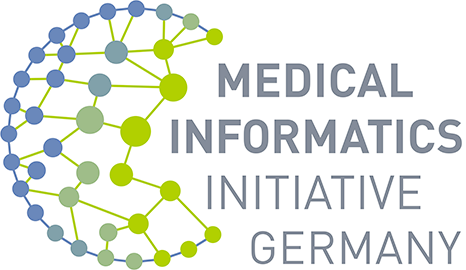05.02.2025. The German population is getting older – which means that age-related diseases such as Alzheimer's and Parkinson's are becoming increasingly important for research. These neurodegenerative diseases (NDDs) currently represent a major medical challenge, as they are incurable and associated with high levels of suffering. Early diagnosis is crucial to slow the progression of the disease. This is where the NDEMobil Junior Research Group at the University Hospital Bonn comes in, researching technical solutions that enable early diagnosis and monitoring of the progression of NDDs. In this interview, junior research group leader Dr. Lara Marie Reimer explains how smartphones and wearables can help with NDDs.
The NDEMobil Junior Research Group is working on technical solutions for the diagnosis and monitoring of neurodegenerative diseases. What fascinates you most about this area of research?
NDDs are a topic that affects us all. Many of us know someone in our family who has Alzheimer's or Parkinson's, and we know how much suffering these people go through. The big problem is that there is currently no cure. There are only initial approaches aimed at delaying the onset or slowing the progression of Alzheimer's, for example. So there is a lot of pressure to find ways to detect these diseases early and improve treatments. NDDs are also very diverse. In addition to well-known symptoms such as forgetfulness in Alzheimer's or tremors in Parkinson's, there are often accompanying conditions such as depression. This requires tailored solutions to identify symptoms and evaluate treatments. To do this, we need to be able to observe the person's entire daily life to find out where they are impaired. This allows us to see how and where we can start to identify the symptoms.
How can wearables help diagnose and monitor NDEs?
The great advantage of wearables and smartphones is that we carry them around with us every day. This allows them to collect a lot of data that is probably representative of our everyday lives. Clinical trials, on the other hand, take place in isolated situations and can be influenced by factors such as nervousness.
This is where I see the great opportunity for smartphones and wearables: we can use them where people go about their daily lives and find out what really affects them – without the test effect. We already use smartphones and wearables to collect a lot of data about ourselves throughout the day, such as movement data or vital signs like heart rate. This data allows us to identify changes in behavior that could indicate an NDD, such as reduced social activity. We also use cognitive and motor tests on the smartphone to make recommendations for possible medical evaluation. However, we are still in the early stages.
How exactly does the NDEMobil group's research work proceed?
First of all, we regularly check which sensors can be found in most modern smartphones and what data we can collect with them. This is a very young field of research. Activity and vital data from smartphones and wearables have hardly been used for NDD research. This means that we first have to formulate hypotheses: Based on the literature, where might there be changes in vital data or movement patterns in the disease?
Then we build a first technical prototype and test it on healthy subjects. The data are meaningful if they behave similarly in similar people, if subgroups can be found, or if a person behaves similarly in repeated measurements. If this is the case, we will work with our neurology colleagues to set up larger studies in which we can analyze data from different patient groups in a standardized way. But it will be a while before that happens. We are still at the prototype stage for most of the studies and are slowly moving towards testing in patients.
What are the first results of your group's research?
We are currently working on two more specific publications resulting from the work of the junior research group. The first one deals with the early detection of Parkinson's disease.
Together with colleagues from University Hospital Bonn, University Hospital Cologne, Forschungszentrum Jülich and other universities, we have written a video analysis algorithm based on two simple motor function tests. The first test is the so-called "Finger Tapping Test". In this test, the subject has to rapidly tap the thumb and index finger of one hand together ten times. In a second test, the subject has to open and close his fist. We performed these tests on patients suffering from sleeping sickness, an early stage of Parkinson's disease. We found that even at this stage, there are minimal changes in motor function that we can detect with video analysis. At the same time, we showed these videos to doctors. The recognition by the algorithm was significantly better than that of the doctors. Our results show that this sleep disorder, which is considered to be isolated, is not isolated at all, but is already associated with motor changes.
The second publication relates to our digital cognition tests, which we developed based on traditional paper-and-pencil tests. We enriched these tests with additional parameters. The result: the individual results of the motor skills tests correlate with the speed at which the cognition tests were completed. In the future, we want to extend these tests with face tracking, for example, to see what the facial reactions look like when the subject is thinking. This is still in the prototype stage. In the future, we would like to do a larger standardized study on this.
Please complete the following sentence: Patients benefit from the technical solutions developed in the SMITH Consortium because...
...digitization simplifies and improves existing processes. It enables new methods that contribute to a more personalized medicine.
Quelle: SMITH-Konsortium

